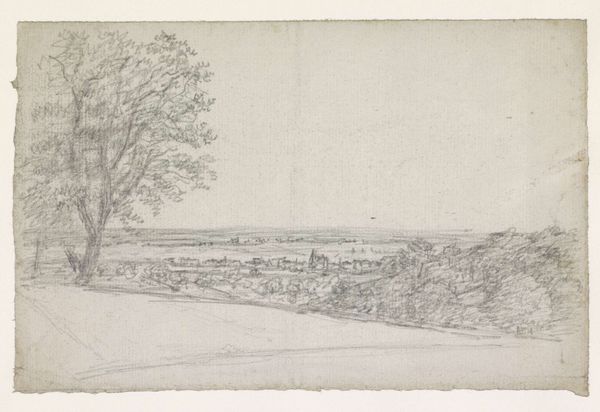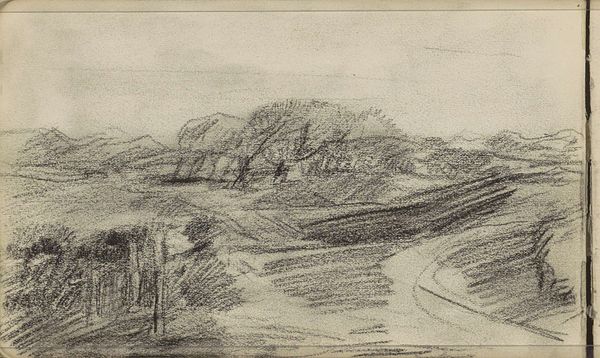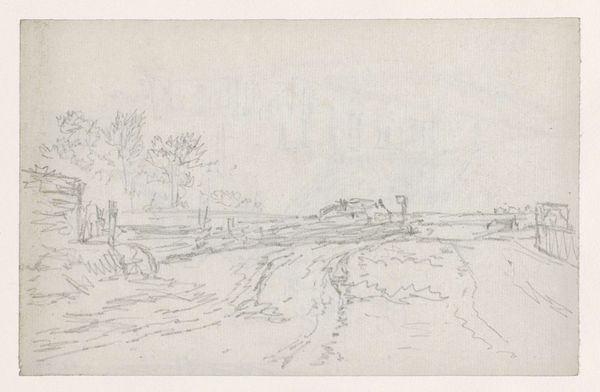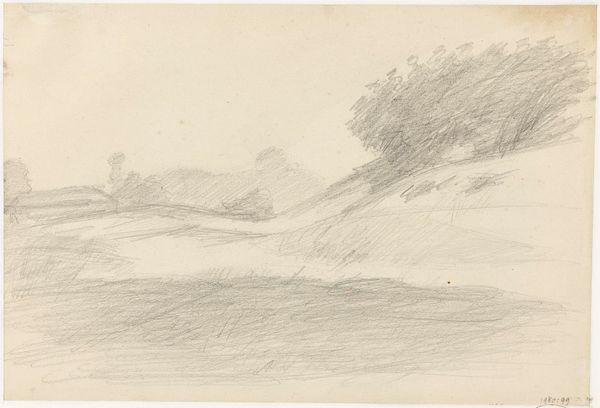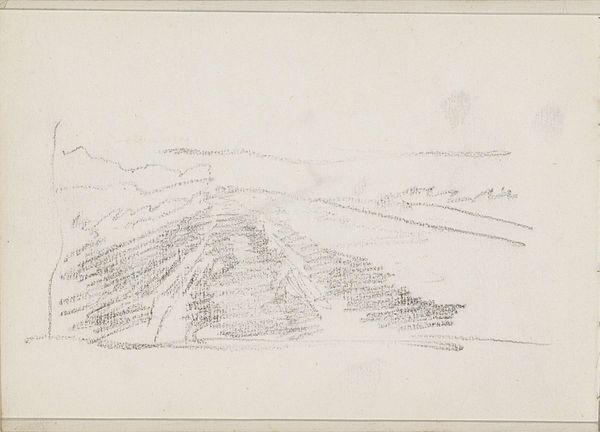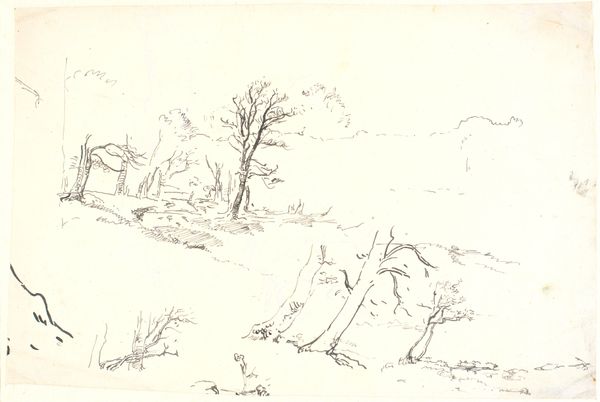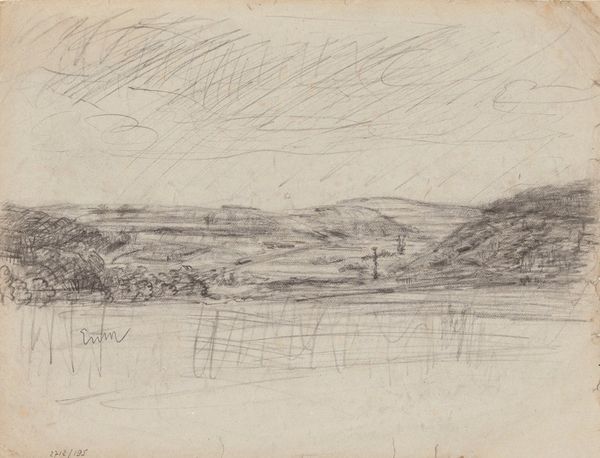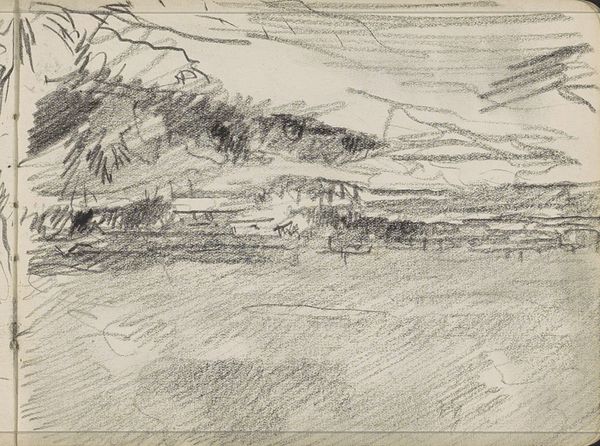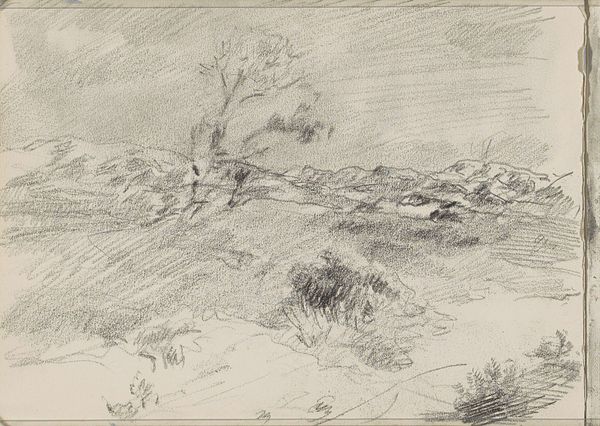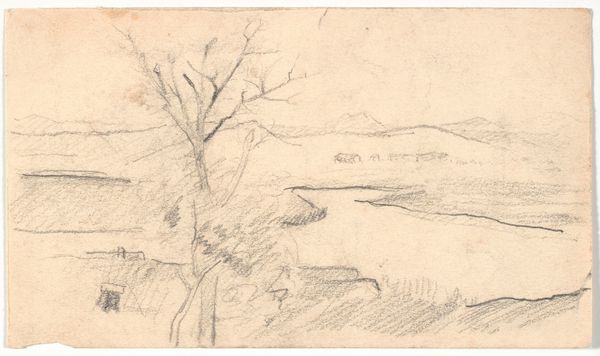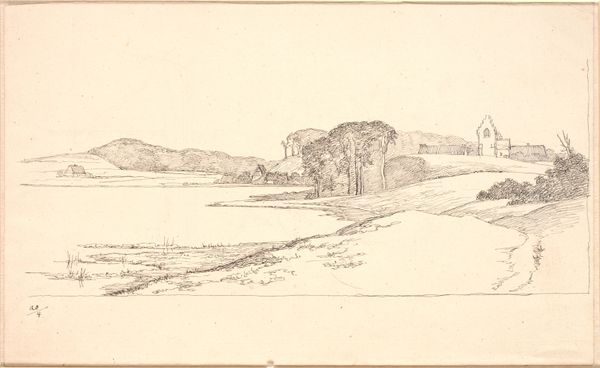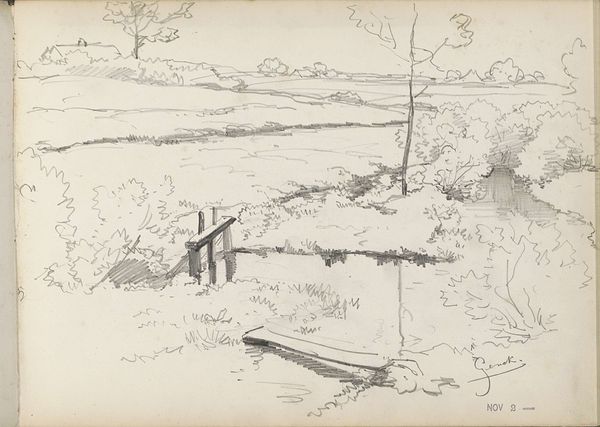
drawing, pencil
#
drawing
#
pencil sketch
#
landscape
#
personal sketchbook
#
romanticism
#
pencil
#
realism
Dimensions: height 108 mm, width 170 mm
Copyright: Rijks Museum: Open Domain
Curator: Georges Michel sketched this scene, entitled “View of the Seine Plain; on the Right, the Escarpment of the Butte,” sometime between 1773 and 1843, using pencil. Editor: There’s a rawness to it; I’m immediately drawn to the texture he’s captured with such simple means. A landscape held together by subtle contrasts, between foreground and background, between light and shadow. Curator: Michel often depicted the outskirts of Paris, finding beauty in these transitional zones. Windmills were a recurring motif, symbolizing rural life and, perhaps, the encroachment of urbanization. Think about the psychological weight of representing a shifting landscape. Editor: Right. We often romanticize pastoral scenes, yet these liminal spaces can also represent economic and social precarity. The etching style here adds a starkness to it; it's as if the impending change is right there on the surface. Curator: Note the composition, though. The viewer is placed on the road, our eye is drawn along it, following that diagonal up into the distant, hazy plain. The butte on the right almost acts as a barrier. The pencilwork lends a quality of light. The lines themselves feel restless, fleeting. They recall the Dutch Golden Age paintings of fleeting skies. Editor: Absolutely. The way he handles light contributes to that atmospheric depth, almost echoing social strata from the late 18th century into the early 19th. This isn't just a landscape; it’s a portrait of change. It almost reads like an illustration from an abolitionist pamphlet. Curator: Yes, seeing Michel as a harbinger of societal shifts makes sense. He preserves what could be lost but reminds us of nature’s power to be a constant presence in change. I wonder if future generations viewed windmills through this nostalgic lens after their prominence faded. Editor: Precisely. By capturing the tension between industry and nature in these sketches, Michel's landscape transcends the mere aesthetic and embodies something quietly revolutionary. We see here, I believe, seeds of later artistic revolutions.
Comments
No comments
Be the first to comment and join the conversation on the ultimate creative platform.
